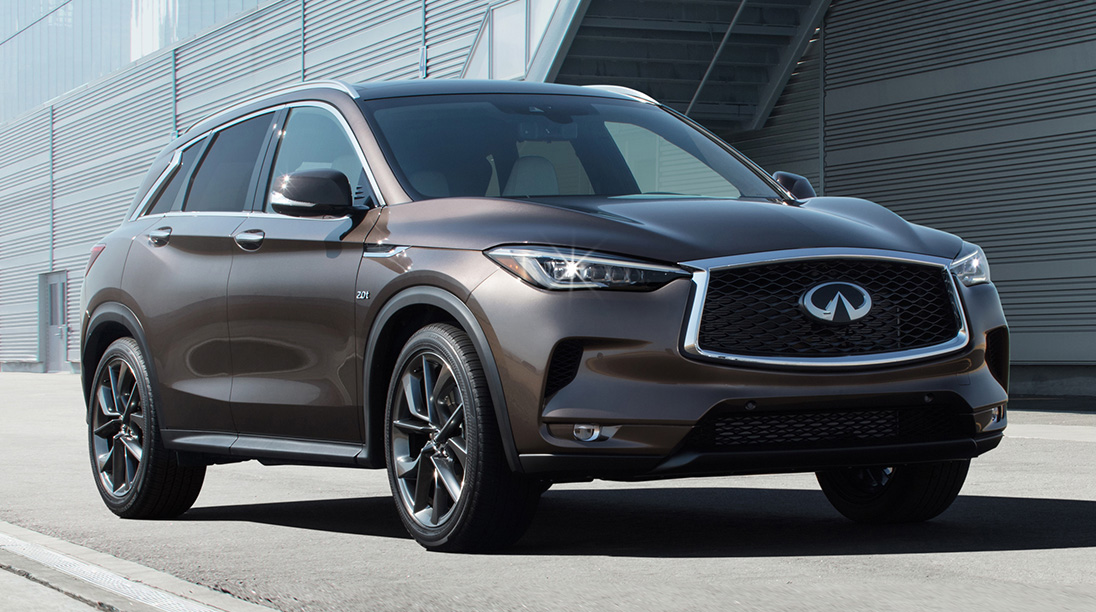The global restructure announced this week sees Nissan’s premium brand pulling out of Western Europe and the United Kingdom early next year and closing down its production facilities in England over the next three months, taking with it the Q30 small hatch and QX30 crossover twin – two models that together accounted for 26.2 per cent of Infiniti’s sales in Australia last year.
There was no mention of Australia as a casualty of the cutbacks, but Infiniti Cars Australia has confirmed that our position as part of the Asian region will keep the business alive here as the company now directs all of its resources towards its core markets – primarily North America and China, and to a lesser extent Eastern Europe, the Middle East and Asia.
Culling the Q30 and QX30 will have a major impact on sales in Australia and serves as a fresh blow to the brand that has struggled to find its way in the marketplace.
Infiniti sold just 649 new vehicles here last year, which marked a 16.4 per cent downturn on 2017 (776 units) and its second successive negative result after peaking at 807 units in 2016.
This followed incremental growth each year since the brand returned to market in the second half of 2012, brought on by new and updated models and the appointment of new dealers.
The company has reshuffled its local retail network over the years – now operating with six dealerships (two each in Sydney and Melbourne and one each in Canberra and Perth) and three service centres (Brisbane, Newcastle and Adelaide) – while the vehicle range now comes back to five model lines with the Q30/QX30 deleted: Q50 mid-size sedan, Q60 coupe, Q70 large sedan, QX70 large SUV and the QX80 upper-large SUV.
The absence of dedicated small and mid-size SUVs are clearly limiting the brand’s potential, but the QX50 mid-sizer is expected to be launched in Australia this year and the production-oriented compact QX Inspiration concept shown at the Detroit motor show in January previewed a smaller SUV that must also be in the works for the brand to not only thrive but, we’d suggest, survive.

Bring it on: The all-new QX50 mid-size SUV could help Infiniti avoid its third successive annual sales decline, although softening market conditions and the loss of Q30/QX30 make it a tough assignment.
The latter might, however, only be sold as a battery-electric vehicle, while Infiniti has this week reiterated that it will electrify its portfolio from 2021 onwards (with a mix of full-electric, plug-in hybrid and range-extending powertrains), discontinue diesel engines around that time and “focus its resources on its biggest opportunities” – which include its SUV line-up in North America and five new vehicles launching in China over the next five years.
On the latter, one of these will be a sporty four-door coupe-like sedan based on the Q Inspiration concept and using an all-new electrified vehicle platform.
We are mindful that none of these products will end up in Australia if production is limited to left-hand drive.
And moving to widescale electrification at the expense of traditional powertrains will suit the Chinese market but could prove to be another limiting factor in Australia, where EV activity is increasing but the category remains a long way off appealing to large numbers of buyers, while the company’s pledge this week to “realise more synergies with Nissan Motor Company” is not yet tangible.
Last year, Infiniti’s two larger SUVs accounted for just 163 units (equivalent to 25 per cent) of the brand’s sales in Australia – 70 examples of the ageing QX70 (-57.6%) and 93 for the Nissan Y62 Patrol-based QX80 (+12.0%) – while the outgoing Q30/QX30 made up 170 sales combined (-24.4%).
This left the Q50 shouldering the load as its highest-volume model on 217 sales (-4.8%) – albeit in a fast-shrinking segment – while the Q60 (91, +56.9%) and Q70 (8, -52.9%) made up the remainder of the total 649 units: a figure that was about 100 shy of the total in the UK but below expectations for the Australian subsidiary, which late last year reiterated that it was working hard to the meet head office’s “aggressive ambitions”.
Over the longer term, the aim is clearly to push up towards 10,000 sales – the level that the leading Japanese luxury marque, Lexus, is expecting to reach this year for the first time since the Toyota-owned brand was formally established three decades ago – but this is a distant marker for Infiniti and any other contender, such as Genesis or Polestar.
The stated shorter-term requirement for Infiniti Cars Australia is to achieve year-on-year growth, which has not occurred for the past two years and could prove a difficult assignment in 2019 amid slowing market conditions and a drying supply line of Q30/QX30.
Given the small volumes involved, the numbers can quickly turn around, but after the first two months of trading Infiniti sales are up by eight units, with 69 new registrations recorded to the end of February (+13.1%).
This is partly due to recent price cuts and other special deals designed to stimulate sales, particularly with the small hatch and crossover combo which late last year had variants cut and powertrains (2.2 diesel/1.6 petrol) removed.
And if the QX50 arrives around the middle of the year as previously anticipated, just as Q30/QX30 production closes down in the UK, Infiniti might well buck the broader market trends and return to growth – albeit with a long, hard road still ahead of it.
By Terry Martin















 Read More: Related articles
Read More: Related articles

